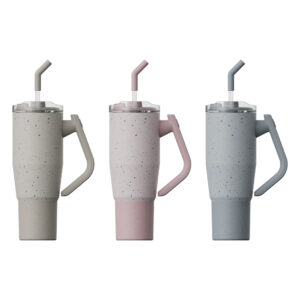What is the plastic spraying process?
Plastic spraying, also known as electrostatic powder coating, is a surface treatment technique that involves applying plastic powder onto parts. This method has been widely adopted since the 1980s as a decorative and protective technology for metal surfaces. Compared to traditional spray painting, plastic spraying offers numerous advantages, including advanced technology, energy efficiency, safety, reliability, and vibrant color options. As a result, it is commonly used in light industry and home decor applications.

Table of Contents
ToggleI. Understanding the Principle of Plastic Spraying
The core principle of plastic spraying lies in charging plastic powder using high-voltage electrostatic equipment. The charged powder is sprayed onto the workpiece’s surface, where it adheres uniformly under the influence of an electric field, forming a powder coating. This coating is then melted and cured through high-temperature baking, creating a dense, protective layer with various surface effects. The final coating adheres firmly to the workpiece’s surface.
Plastic spraying is most commonly performed using the electrostatic spraying process, which employs corona discharge to achieve adhesion. The process works as follows:
- Powder coating is delivered to the spray gun via compressed air from the powder supply system.
- A high-voltage electrostatic generator creates a strong electric field at the spray gun’s nozzle, causing corona discharge and charging the powder particles.
- The charged particles are attracted to the oppositely charged workpiece surface, forming an even coating. Once a specific thickness is reached, electrostatic repulsion prevents further adhesion.
- The coated workpiece is heated to melt and cure the powder, creating a durable, hard surface.
Powder coatings typically include materials such as acrylic powder and polyester powder. The resulting coatings can display flat or matte finishes, making them ideal for various applications.
II. The Plastic Spraying Process
- Pre-treatment
- Involves degreasing, derusting, phosphating, and passivating the workpiece.
- This step removes oil, rust, and dust while forming a uniform, rough phosphating film to improve adhesion and rust resistance.
- Electrostatic Spraying
- Using electrostatic adsorption, a layer of powder coating is evenly applied to the workpiece surface.
- Fallen powder is collected and reused through a recycling system.
- High-Temperature Curing
- The coated workpiece is heated in a curing furnace to around 185°C and held for approximately 15 minutes, depending on the workpiece.
- This step melts and solidifies the coating into a hard, protective layer.
- Cooling
- The workpiece is cooled to room temperature after curing.
- Decorative Treatment
- Additional treatments can enhance the appearance with wood grain effects, patterns, or gloss finishes.
III. Advantages of Plastic Spraying
- Environmentally Friendly:
- Plastic spraying is solvent-free, non-toxic, and produces no harmful pollution, aligning with modern environmental protection standards.
- Durable and Corrosion-Resistant:
- The coating provides excellent adhesion and corrosion resistance, significantly extending the service life of treated surfaces.
- High Efficiency:
- Automated production lines reduce labor costs and improve manufacturing efficiency.
- Aesthetic Appeal:
- The process offers vibrant, uniform finishes, enhancing the visual appeal of products.
Applications in Bottle Manufacturing
In the water bottle manufacturing industry, plastic spraying is a key surface treatment technique. It creates smooth, uniform, and visually appealing bottle surfaces while improving wear resistance and durability. These benefits make it a preferred choice for enhancing the quality and longevity of products like insulated bottles and decorative containers.
Challenges and Considerations
Despite its advantages, plastic spraying has some limitations:
- Cost:
- The process can be expensive, as coating thickness and color affect production costs.
- Process Sensitivity:
- The quality of the coating depends on environmental conditions and precise process control.
- Potential Risks:
- In some cases, odors or hazardous pigments may pose environmental or health risks, requiring proper safeguards.
Plastic spraying is a versatile and effective surface treatment method that enhances the appearance, durability, and functionality of metal products. In the bottle industry, it offers significant aesthetic and protective benefits, contributing to high-quality, long-lasting products. However, manufacturers must carefully consider costs, quality control, and environmental impact when adopting this technology.

